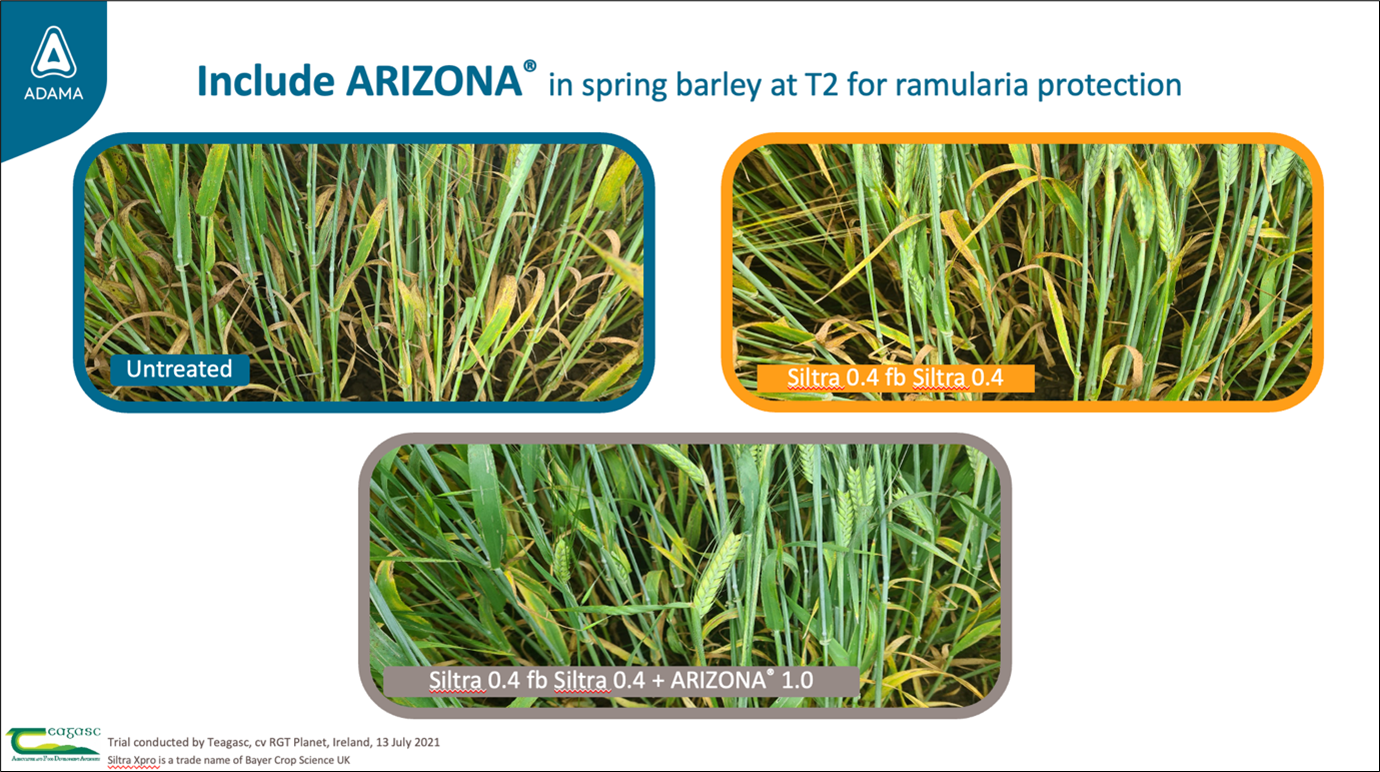
Protection for Spring Barley in a shortened season

Whilst not ideal – two treatments (at T1 and T2) will always provide better protection compared to a single treatment – it is an understandable strategy, especially as growers, agronomists and sprayer operators work hard to catch up on lost time.
However, with any stress caused by the weather or ground conditions bound to increase the risk of ramularia, anyone considering a single application approach must make sure the treatment they apply is strong enough to offer long-lasting and effective disease control. This is especially true with regard to ramularia protection as many key fungicides have suffered erosion of efficacy against this difficult to control disease as a result of resistance development.
Include ARIZONA for added protection
In addition to the usual array of single site active ingredients, growers opting for a single treatment should therefore also include ARIZONA (500 g/l folpet) as a tank mix partner.
The addition of this proven and cost-effective multi-site fungicide will not only help to protect the emerging leaves and minimise spikelet mortality but will also deliver a good return on investment by prolonging the crop’s green canopy duration. This in turn will help the crop to produce more grains per ear, increase the dry matter available for grain filling and produce a higher thousand grain weight (TGW). ARIZONA’s multi-site mode of action will also help to limit the ongoing and increasing threat of resistance to the current array of single site actives.

The addition of ARIZONA to T2 treatments improves ramularia protection and greening.
Two are better than one
ARIZONA should ideally be included twice in a typical 2 spray programme to protect crops against ramularia, rhynchosporium and net blotch. The key timing for its inclusion alongside single site actives is at T2 (typically GS39-49) when it provides good efficacy against ramularia and prolongs the crop’s green canopy duration. It can also be included earlier in the season (at T1) or at T3 should the need arise (e.g. where the T1 was applied around GS32 as a single spray strategy however the threat of infection is extended by wet weather/stress conditions and the decision is taken to top-up at ear emergence). Please note: latest time of application for ARIZONA – before end of ear emergence (GS59).